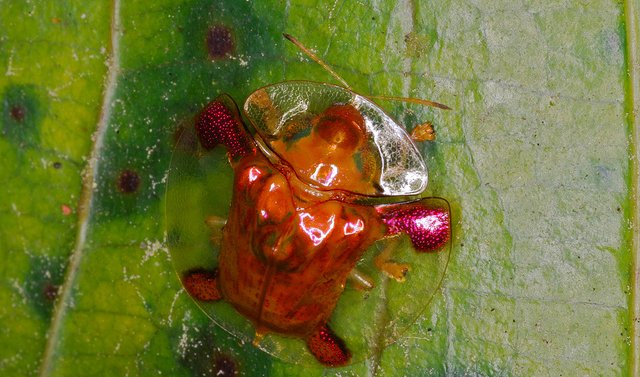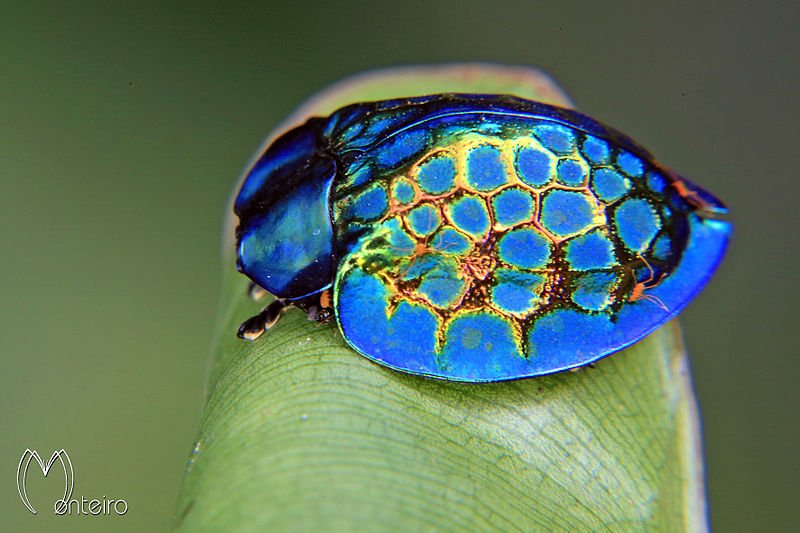This golden tortoise beetle looks great in its tiny spacesuit

Bec Crew
Bec Crew

WHILE ADULT golden tortoise beetles (Aspidimorpha sanctaecrucis) get to stroll around in brilliant gold and magenta hues that shine like crumpled foil in the light, as larvae, they look like a cross between a cockroach and a caterpillar – all brown and flat and covered in spines.
And if you think that sounds gross, it gets far worse – the main defence mechanism of this Southeast Asian insect is something called a faecal shield. And yes, it’s exactly what it sounds like.
Tortoise beetle larvae have evolved uniquely elongated anuses that can excrete a massive slab of poop and discarded exoskeleton, which is then fashioned into a crusty shield that’s held above the insect like so:

(Image Credit: Manfred Kunz)
Sometimes things can get very elaborate:

(Image Credit: Judy Gallagher)
And you’ll be pleased to know that the faecal shield (also known as a faecal parasol, if you want to get fancy) doesn’t just sit there like a sun umbrella.
When threatened, tortoise beetle larvae will use their club-like excrement as a weapon, thrusting it at would-be predators, and potentially even lacing it with toxins for added pain.
Things get even more bizarre when there’s multiple tortoise beetle larvae, because as Matt Simon explains for Wired, when threatened, a group of larvae will form a tight circle, stacking one on top of the other with their faecal shields erect and facing outwards.
Their mother, if she’s still around, will sit on the top of this pyramid of horrors like this, or charge around the perimeter, fiercely protecting her brood.
“It’s crazy,” Caroline Chaboo, a biologist at the University of Kansas, tells Wired.
“The investment is what stuns me. [T]he female is there guarding this brood for two to three weeks and putting her life on the line. And the assault on the brood is never-ending, it’s just a constantly vigilant mother who can protect her brood to adulthood.”
Fortunately, the life of a tortoise beetle isn’t all faecal shields and long anuses. If the larvae make it into adulthood, they morph into the beauties of the insect world.
You’d be forgiven for thinking it doesn’t get much better than the golden tortoise beetle, because look at it:

(Image Credit: Bernard Dupont)
But then have you met the imperial tortoise beetle (Stolas imperialis) from Brazil?

(Image Credit: A. S Monteiro)
How about the ringed tortoise beetle (Ischnocodia annulus) from Central America, which looks like it’s got a little target on its back:

(Image Credit: Thomas Shahan)
If you want to see some local species, here’s Chris Burwell, senior curator of insects at the Queensland Museum, with his collection:

